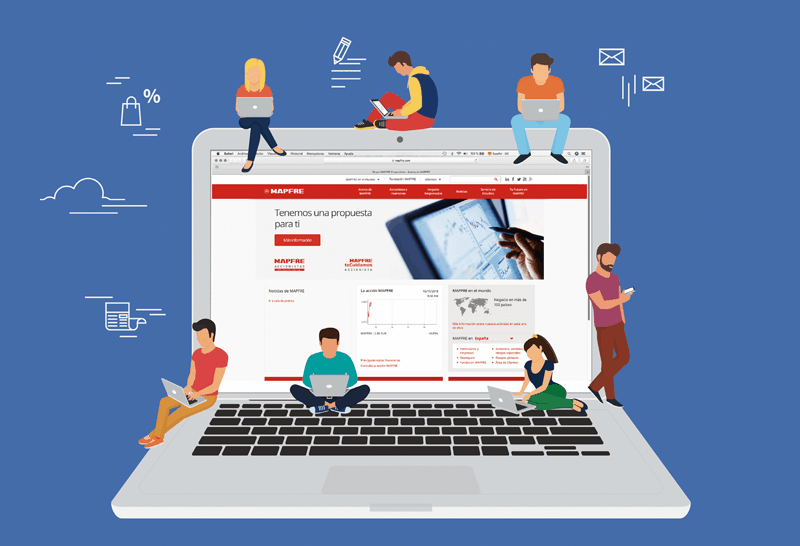The Leading Actors in this issue are the torchbearers spearheading MAPFRE’s digital culture. They are all in positions directly related to the digital environment and their daily functions are closely linked to the core building blocks on which the Group’s digital transformation rests.
TEXT MARÍA JESÚS PÉREZ FUENTES | ILLUSTRATION THINKSTOCK | PHOTOS MAPFRE
With the aim of responding swiftly to the new needs of our current and potential clients, as well as to the maintenance of the company’s future processes, in 2015 MAPFRE launched its transversal Digital Transformation strategic initiative. Since then, 200 projects have been undertaken in 11 countries, the Global Intranet has been launched and significant progress has been made in the digitization of operations thanks to the automation of our processes, among other milestones.
But MAPFRE’s learning curve in the digital world began over a decade ago, split into three strands. Firstly, Verti, specialized in digital sales and already operating in Spain, Germany, Italy and the United States. Secondly, the brand Insure&Go, focused on selling travel insurance via digital channels; and thirdly, MAPFRE’s value proposition, which enables us to seek clients in the digital world and attract them to more traditional channels such as our offices.
The new technological trends have also made a significant impact on the insurance industry. This is why our organization must be able to count on digital leaders who can enable us to adapt and meet the requirements this transformation calls for in each region and country. These leaders have received training within the organization itself, in order to help ensure its growth in this new digital age. Catherine, from MAPFRE PERÚ, for instance, received in-house training in such fields as funnels, e-commerce or AI tools.
The change process MAPFRE is undergoing provides our Leading Actors with a motivating challenge. “Thanks to the Digital Challenge initiative, with numerous projects that encourage the use of agile methodologies, knowledge management, collaborative work or flexibility in work environments, we have a really good road map and what we need to do is k eep on implementing it,” points out Pilar, from the Corporate Digital Transformation Office.
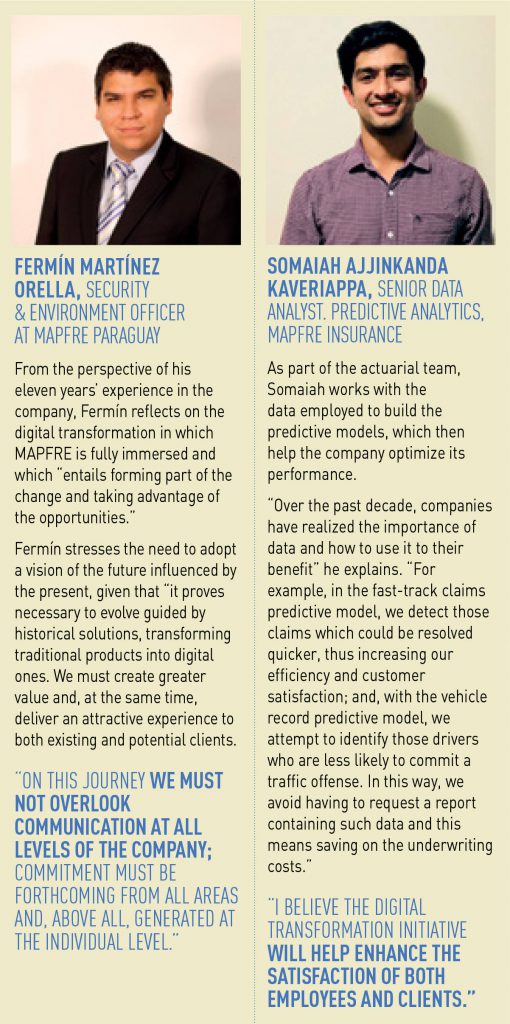
The online world allows employees to collaborate, cooperate, contrast ideas, and co-innovate in a more agile, flexible manner. Take the example of John, process analyst at MAPFRE COLOMBIA, who explains to us that they are transforming the current rating, issuance, renewal, claims and assistance processes in order to enhance the end customer experience.
The digital environment provides the most valuable strategic tool for the development of our businesses: data. Relevant data enables us to adjust marketing strategies and gain greater knowledge of users, so as to offer them a better experience and increase the quality of the business underwritten, thus helping our companies achieve profitable growth.
The work Somaiah does also fits the digital employee profile. From the Predictive Analytics department at MAPFRE INSURANCE, he tells us what a typical da y at the office is like: “We compile data for the various projects our team is working on and analyze it to detect trends or interesting findings. This information is then used to build predictive models which benefit the company’s performance. I’m also involved in monitoring these models once they are in production.” The fact is that the data growth explosion in the digital era has provided data scientists with an accessible asset that facilitates better knowledge of clients and competitors, as well as the development of new or better products and services through automation and the application of newly developed, more sophisticated algorithms and tools, capable of achieving great results in this Predictive Model environment.
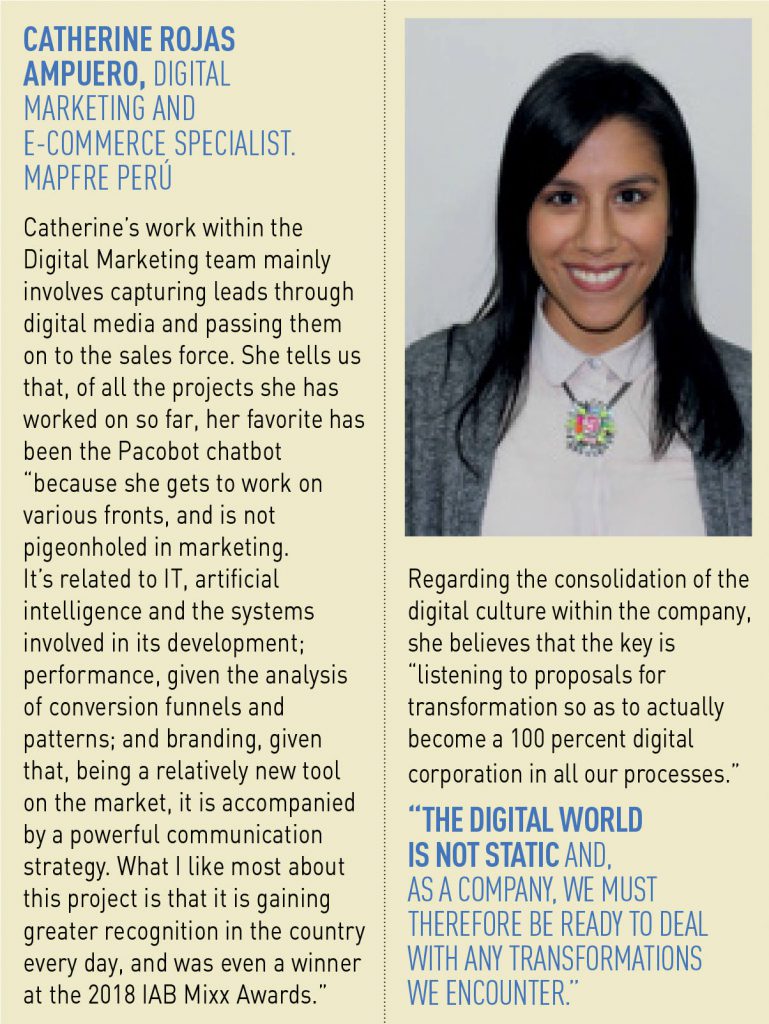
The use of digital communication and collaborative work tools improves coordination and joint action by the cybersecurity teams in different countries. This is a fundamental aspect in order to be able to cope with global threats such as cyberattacks and, moreover, enables us to respond better to incidents. “We are gaining greater agility in the company’s processes, but, at the same time, decisionmaking based on data collected via Big Data mechanisms brings with it greater responsibility as regards the management of data which has been entrusted to the company,” adds Fermín, from MAPFRE PARAGUAY.
“The opportunities presented by digitization are only limited by the scope of our imagination. For example, in the Security Area, on a daily basis we handle numerous requests to grant or withdraw clearances, we modify users’ roles, we advise on new initiatives, we draft reports on IT incidents, we support employees on security matters, etc. The relationship with clients is being redefined faster than we thought, given that we live in an online, ever more connected world,” he states. But, how can an employee contribute to MAPFRE’s digital transformation? The Digital Challenge strategic initiative has laid down certain guidelines so that all we employees can feel part of the change and, as Somaiah, says, “with this strategic initiative the satisfaction of both clients and employees will improve.” In MAPFRE, the challenges we are facing will enable us to consolidate a digital culture.
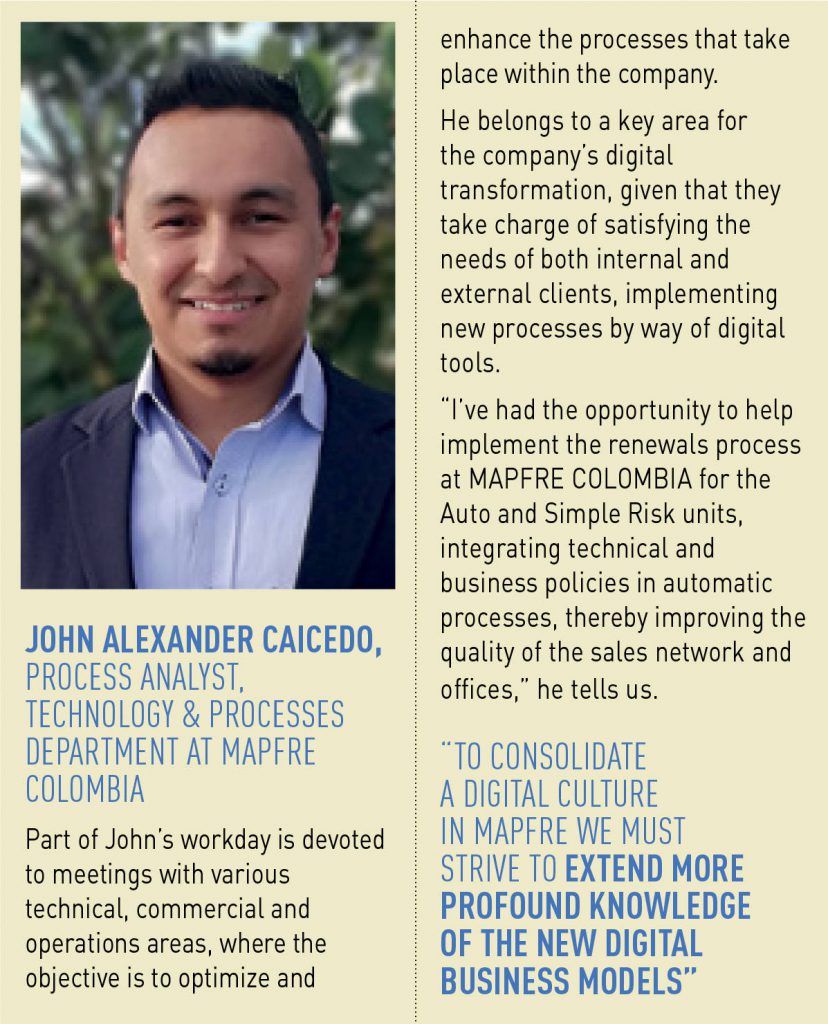
Externally, the main one is to take advantage of the benefits of digitization without depersonalizing customer relations. Internally, having a team capable of dealing with this digital challenge.” “The trend is to consolidate the accessibility of information and swift decision-making. This should take place in all areas of MAPFRE and we would thus be much more efficient as a company,” declares Catherine.
For Pilar, “the key to the future of our business depends on our adapting to the needs of our ever more connected customers, who are more social, use multiple channels, are more informed before they make purchase decisions, and increasingly perform selfservice operations in order to gain immediacy. That is why we must digitize both our customer relations and our operations, all with the support of technology as an enabler, and our employees as the drivers of change. Only in this way can we achieve top-of-mind brand awareness for future generations of consumers.”
Fermín adds: “In my opinion, the main challenge is the cultural change: we must manage to form more flexible, more agile teams, where creativity is recognized as an important value in the organization; and work on our training in digital competencies and skills, for which support from senior management is essential.”
“The human factor is indispensable in any organizational change and so constantly raising awareness, highlighting change, and specializing in the new technologies is vital,” concludes John.
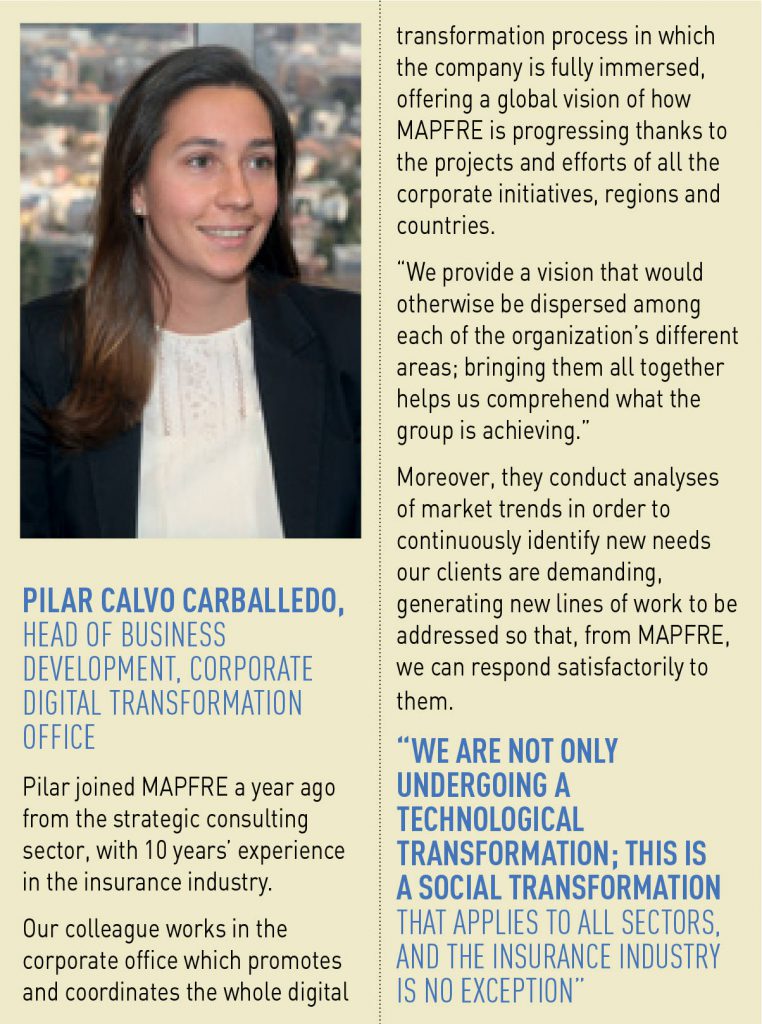
For MAPFRE, the digital transformation is not just another milestone, but rather an ongoing process. Therefore, over the coming months, the company will continue promoting projects that help increase its digital maturity so as to respond swiftly to the needs of employees, clients, distributors and providers. Ultimately, the goal is to take advantage of the benefits of digitization and leverage it to maintain a high level of differentiation, with specialization, customer focus, flexibility and quality of service. And to lay out that path, the digital employees are our best ally.

